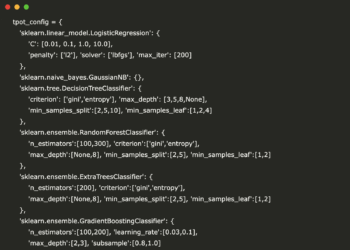
How to Decide Between Random Forests and Gradient Boosting
Image by Editor | ChatGPT
Introduction
When working with machine learning on structured data, two algorithms often rise to the top of the shortlist: random forests and gradient boosting. Both are ensemble methods built on decision trees, but they take very different approaches to improving model accuracy. Random forests emphasize diversity by training many trees in parallel and averaging their results, while gradient boosting builds trees sequentially, each one correcting the mistakes of the last.
This article explains how each method works, their key differences, and how to decide which one best fits your project.
What is Random Forest?
The random forest algorithm is an ensemble learning technique that constructs a collection, or “forest,” of decision trees, each trained independently. Its design is rooted in the principles of bagging and feature randomness.
The procedure can be summarized as follows:
- Bootstrap sampling – Each decision tree is trained on a random sample of the training dataset, drawn with replacement
- Random feature selection – At each split within a tree, only a randomly selected subset of features is considered, rather than the full feature set
- Prediction aggregation – For classification tasks, the final prediction is determined through majority voting across all trees; for regression tasks, predictions are averaged
What is Gradient Boosting?
Gradient boosting is a machine learning technique that builds models sequentially, where each new model corrects the errors of the previous ones. It combines weak learners, usually decision trees, into a strong predictive model using gradient descent optimization.
The methodology proceeds as follows:
- Initial model – Start with a simple model, often a constant value (e.g. the mean for regression)
- Residual computation – Calculate the errors between the current predictions and the actual target values
- Residual fitting – Train a small decision tree to predict these residuals
- Model updating – Add the new tree’s predictions to the existing model’s output, scaled by a learning rate to control the update size
- Iteration – Iterate the process for a specified number of rounds or until performance stops improving
Key Differences
Random forests and gradient boosting are both powerful ensemble machine learning algorithms, but they build their models in fundamentally different ways. A random forest operates in parallel, constructing numerous individual decision trees independently on different subsets of the data. It then aggregates their predictions (e.g. by averaging or voting), a process that primarily serves to reduce variance and make the model more robust. Because the trees can be trained simultaneously, this method is generally faster. In contrast, gradient boosting works sequentially. It builds one tree at a time, with each new tree learning from and correcting the errors of the previous one. This iterative approach is designed to reduce bias, gradually building a single, highly accurate model. However, this sequential dependency means the training process is inherently slower.
These architectural differences lead to distinct practical trade-offs. Random forests are often considered more user-friendly due to their low tuning complexity and a lower risk of overfitting, making them an excellent choice for quickly developing reliable baseline models. Gradient boosting, on the other hand, demands more careful attention. It has a high tuning complexity with many hyperparameters that need to be fine-tuned to achieve optimal performance, and it carries a higher risk of overfitting if not properly regularized. As a result, gradient boosting is typically the preferred algorithm when the ultimate goal is achieving maximum predictive accuracy, and the user is prepared to invest the necessary time in model tuning.
| Feature | Random Forests | Gradient Boosting |
|---|---|---|
| Training style | Parallel | Sequential |
| Bias–variance focus | Reduces variance | Reduces bias |
| Speed | Faster | Slower |
| Tuning complexity | Low | High |
| Overfitting risk | Lower | Higher |
| Best for | Quick, reliable models | Maximum accuracy, fine-tuned models |
Choosing Random Forests
- Limited time for tuning – Random forests deliver strong performance with minimal hyperparameter adjustments
- Handles noisy features – Feature randomness and bootstrapping make it robust to irrelevant variables
- Feature-level interpretability – Provides clear measures of feature importance to guide further data exploration
Choosing Gradient Boosting
- Maximum predictive accuracy – Identifies complex patterns and interactions that simple ensembles may miss
- Best with clean data – More sensitive to noise, so it excels when the dataset is carefully preprocessed
- Requires hyperparameter tuning – Performance depends heavily on parameters like learning rate and maximum depth
- Less focus on interpretability – More complex to explain, though tools like SHAP values can provide some insights
Final Thoughts
Random forests and gradient boosting are both powerful ensemble methods, but they shine in different contexts. Random forests excel when you need a robust, relatively fast, and low-maintenance model that handles noisy features well and offers interpretable feature importance. Gradient boosting, on the other hand, is better suited when maximum predictive accuracy is the priority and you have the time, clean data, and resources for careful hyperparameter tuning. Your choice ultimately depends on the trade-off between speed, interpretability, and performance needs.

















